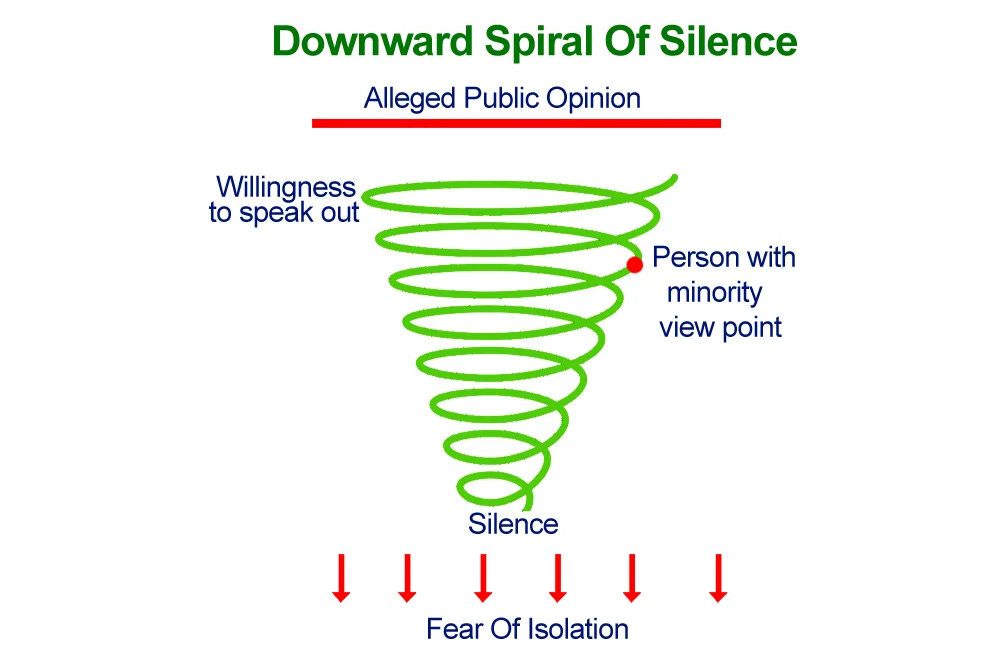Spiral Of Silence
A fascinating theory to explain public opinion.
"A free society is a society where it is safe to be unpopular." - Adlai Stevenson
If you’d like to learn how public opinion can be created and changed, it helps to understand the fascinating theory of the “Spiral Of Silence”.
The “Spiral Of Silence” is a communication theory proposed by political scientist Elisabeth Noelle-Neumann in the 1970s.
The theory claims that people are less likely to express their opinions if they believe their views are in the minority. The fear of social isolation and rejection will cause people to remain silent, even on issues they feel passionately about. This silence reinforces views that have the loudest voices and are perceived to be in the majority.
The spiral works as follows:
People notice that their opinions are losing ground, and become more reserved when expressing their opinions in public.
This reluctance to speak up reinforces the perception that the minority opinion is marginalized, which causes further self-censorship.
This cycle continues, creating a "downward spiral" effect, until no one in this group speaks up.
The spiral of silence, and need for social acceptance, can have a chilling effect on the free exchange of ideas, critical thinking, and innovation, as individuals become hesitant to challenge the “perceived majority” opinion.
For an example of the Spiral of Silence, read the classic book “The Emperor’s New Clothes” by Hans Christian Andersen. It takes a child to call out what the adults refused to acknowledge.
When you recognize and counter the Spiral of Silence, you may be surprised to find how popular a previously "unpopular" opinion is.


